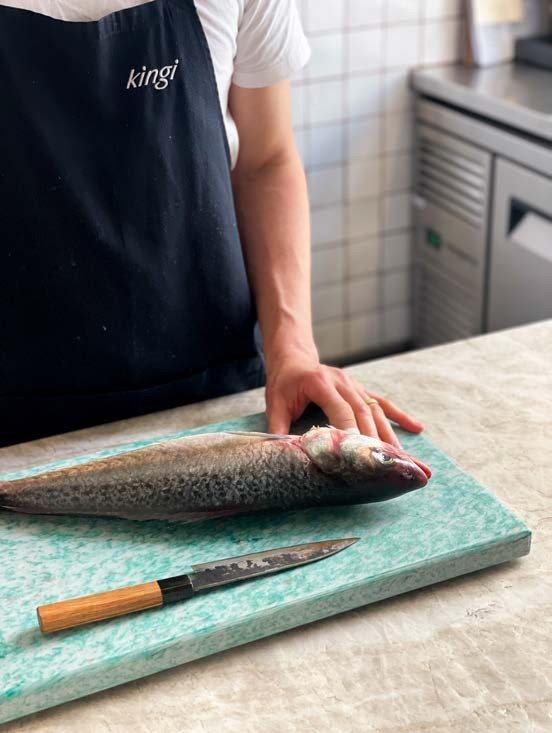KINGI BOARD – KEEPING FISH IN THE SEA, AND NETS OUT

Three diverse groups have joined forces to fight against bottom trawling in New Zealand waters – and they’re doing it with a chopping board made from fishing nets and postconsumer packaging and plastics.
The kingi board is a special collaboration between sustainable seafood restaurant kingi, green technology startup CRITICAL, and LegaSea.
Designed by Rui Peng, co-founder at CRITICAL, and Tom Hishon, co-founder and chef at kingi, the kingi board is made using CRITICAL’s proprietary technology which turns old commercial fishing nets and recycled post-consumer packaging and plastic wastes into a chef-grade chopping board.
Hishon says while they come from a diverse range of industries, the collaboration came about because they all had a common purpose and wanted to do something to help put an end to bottom trawling and begin to restore biomass and biodiversity to the ecosystem.
“There’s something very powerful about how a simple chopping board made from fishing nets and other plastic waste can help to bring about change. It’s made to chef-grade standard that can be used in the kitchen, boat or the bach. It’s the perfect size for filleting too,” says Hishon.
Bottom trawling is a fishing method used by commercial fishing boats. They drag fishing equipment and nets across the seafloor, destroying valuable marine ecosystems and reef structures while capturing unwanted sea life and bycatch in its path.
LegaSea is a not-for-profit organisation with a mission to see bottom trawling removed from New Zealand’s coastal waters. All profits from the kingi board will be invested in LegaSea and restoring the abundance, biodiversity, and health of New Zealand’s marine environment.
A recent survey conducted by Horizon Research for LegaSea revealed significant public opposition to bottom trawling with 79% of Kiwis believing bottom trawling and dredging should be phased out of inshore fisheries and replaced with selective fishing techniques.
Benn Winlove, from LegaSea, says the effects of bottom trawling are hugely damaging and longlasting.
“It takes a minimum of seven years for a trawled seafloor area to recover. And other studies show some areas never recover. Bottom trawling has been happening in the Hauraki Gulf for over 100 years which is why this beautiful, and very valuable area of our ocean, is in a critical state.”
Under the new Hauraki Gulf Fisheries Plan, currently in development, bottom trawling and scallop dredging will be allowed to continue in the Hauraki Gulf Marine Park despite public opposition.

Go to shop LegaSea.co.nz to buy a kingi board.
— LegaSea, kingi, and CRITICAL